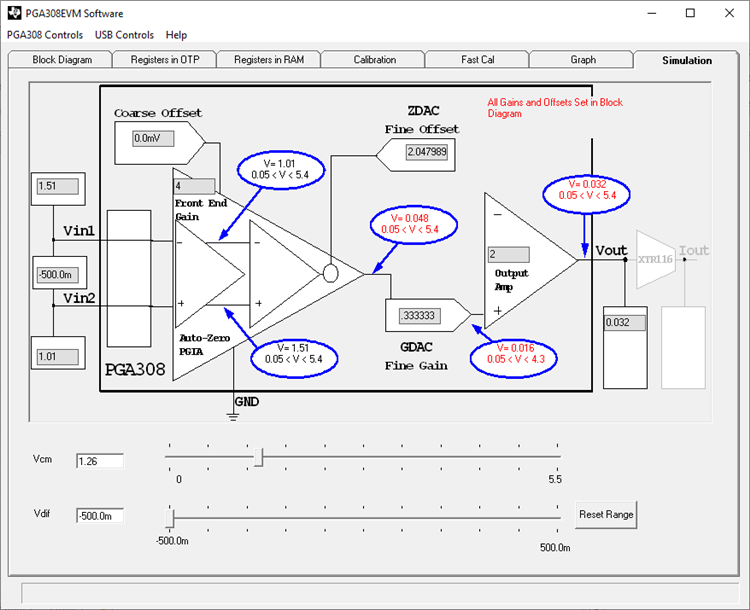Other Parts Discussed in Thread: , DRV5053
Hello,
Our customer is trying to evaluate PGA308 but is facing an issue.
They are trying to calibrate with PGA308EVM Software. Now Vin1 and Vin2 are input from external and VCLAMP, VS and Vref are 5.4V.
When Vin1=1.0V and Vin2=1.0V were input for offset(MIN) and Vin1=1.0V and Vin2=1.3 were input for Span(MAX) during the calibration, it was correctly configured within 1-5V range Vout.
But when Vin1=1.0V and Vin2=1.0V were input for offset(MIN) and Vin1=1.0V and Vin2=1.5 were input for Span(MAX) during the calibration, it was NOT correctly configured.
It looked like that Vout was saturated to 5V when Vdif(Vin2-Vin1) is over 0.4V in this case.
Also when Vdif was actually over 0.4V like 0.5V(Vin1=1.0V, Vin2=1.5V), the PGA308EVM software showed “Measured Full Scale” was 405.0m like the below figure.
Is it possible to input over 0.4V for Vdif on PGA308?
What do you think of the root cause of this issue?
Regards,.
Oba


